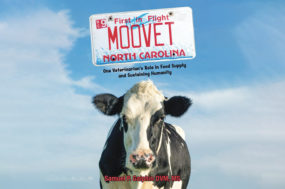Improving the validity of animal science research can have wide-reaching effects, including improving understanding and application of current knowledge, improving the quality of data for use in reviews and meta-analyses, and allowing other researchers to better identify questions for further study.
With this aim in mind, researchers from North America and Australia collaborated to create a set of guidelines for reproduction studies among dairy cattle for the benefit of the animal research community as a whole.
Poor reproductive efficiency is a widely acknowledged phenomenon, and although many individual aspects of reproduction have been studied in isolation, some – such as environmental variables – have not been addressed. These problems are not restricted to dairy cattle, but other areas of research have adopted standards to improve the overall quality of research, such as the REFLECT statement for veterinary medical and food safety specialists or the CONSORT guidelines in medical journals.
During informal meetings at the ADSA-ASAS Joint Annual Meetings, consensus about the need for improvements in this area of dairy science grew. Because of the importance and uniqueness of dairy cattle, separate guidelines for reproductive intervention were deemed necessary, prompting action from several leading scientists.
“These recommendations are directed to animal and veterinary scientists interested in improving reproductive efficiency of dairy cattle,” lead author Ian J. Lean of SBScibus (Camden, New South Wales, Australia) says. “This includes new and established investigators, as well as reviewers and editors. Journals could also adopt our reporting checklist as part of their submission and review process for papers on dairy cattle reproduction.”
The recommendations developed were based on the REFLECT checklist and include units of analysis, inclusion criteria, definitions and statistical methods to be used in dairy cattle reproductive interventions. The definitions of reproductive outcomes and periparturient disorders will help elucidate differences between studies, making complex interactions during reproduction easier for researchers to explore. The recommendations are not intended to be used in their entirety, but the checklist is intended to encourage as much inclusion of data as possible in future studies.
“Limitations will curb the amount of data that can be gathered or reported, but studies will make their best contribution when the points in our recommendations for study design are considered and comprehensively reported,” Lean adds. PD
—From American Dairy Science Association news release




